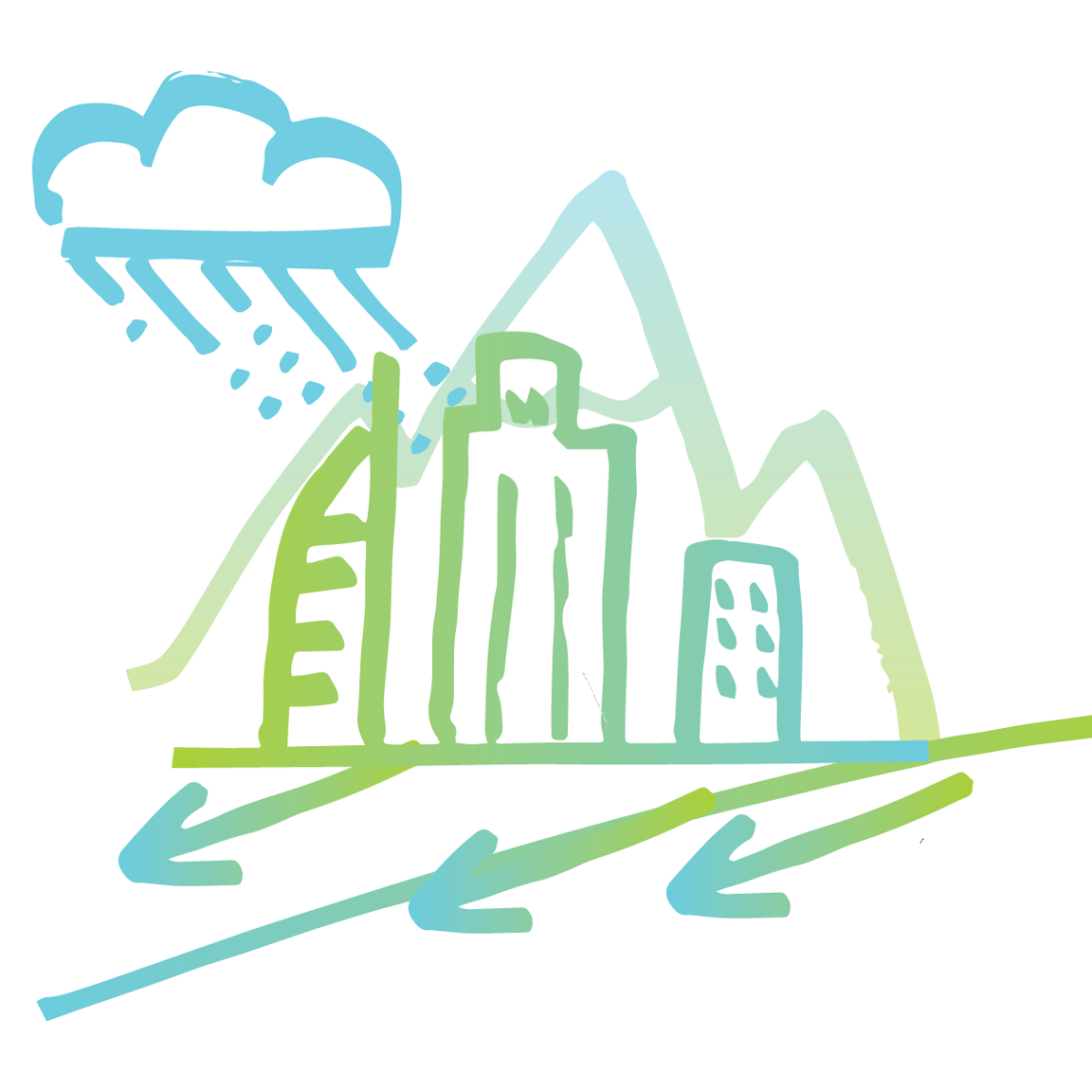Climate
Everyday Impact and Long-Term Goals
climate istock 462881839 72dpi

Green spaces are essential for climate resilience.
Climate change is made more severe by greenhouse gases including carbon, methane, and nitrogen dioxide emitted from human activities including fuels used for transportation, industry in manufacturing goods, and energy use. Changing land use from plants and soil to paved surfaces also reduces the amount of greenhouse gasses absorbed, contributing to concentrations. Climate change leads to higher temperatures associated with more intense heat waves, and less frequent but more intense storm events influencing droughts, floods, fires, erosion, and losses to biodiversity that influence all of these systems [1,2].
There have been more deaths associated with heat waves than any other single climate-related disaster, at an average of 702 a year in the US [3]. Water security is an increasing challenge in Southern California from earlier snowmelt, droughts, and other system vulnerabilities. Fire, flood, and erosion are inseparably linked here, with the majority of damage coming from floods and erosion. The USGS projects an ARkStorm (atmospheric river 1,000-year storm) scenario like that of 1861 could generate losses three times greater than the largest possible earthquake, and has an equal opportunity of occuring [4]. Climate change makes such scenarios more likely, and likely to be more intense. Disasters exceeding $1 billion dollars have nearly doubled across the US in recent years including droughts and floods, and impacts have steadily grown. Between 1980 and 1989 the average cost was $17.8 billion. Between 2017 and 2019 the average cost was $153.6 billion [5]. However, according to the National Institute of Building Sciences every $1 spent on proactive measures can save $6 in reactive disaster costs [6].
Trees, plants, and soil can cool local temperatures: shaded surfaces may be 20–45°F (11–25°C) cooler than exposed surfaces, and plants breathing and sweating (evapotranspiration) alone or with shading can reduce peak temperatures by 2–9°F (1–5°C) [7]. Trees, plants, and soil also absorb carbon and other greenhouse gasses. Worldwide, healthy soil alone can absorb more than three times the total carbon in the atmosphere [8].
Nature-based solutions, primarily soil and plants, can help to support local water supplies, clean water, reduce erosion, and even impact flooding while supporting biodiversity important for all of these functions. Locally native plants and mulch can help to reduce water use, reduce greenwaste, and are essential for biodiversity. Parks and open spaces can protect and provide defensible space for flood and fire impacts. More trails and safe, walkable streets can also better support walking, biking, and public transportation, helping to reduce emissions. Being thoughtful about purchases and conserving and reusing materials can also help to keep lands healthy and protected regionally and globally.
In our densely populated communities, limited space is available for new vegetation, urban trees, and active transportation. However, even every small piece in our connected watersheds can make a difference. Most of the available space throughout the region is in-between existing developments. Trees grouped together have a greater cooling effect, but even dispersed tree cover can provide more shade to homes and businesses [9]. Every patch of healthy soil and native plants can contribute to better outcomes. Design and orientation can have big impacts on heating and cooling, for instance north facing structures benefit from even lighting and require less energy to cool. High albedo materials and treatments, and long-lasting, low-impact, and sustainably sourced materials and treatments may not be expected to occupy more space than less-reflective, shorter-lived, or more negatively impactful alternatives.
Our warm and sunny Mediterranean climate is part of the allure of Southern California, which attracts new residents from all over the world and millions of visitors every year. The Mediterranean climate pattern of hot and dry summers, and mild and rainy winters contributes to California’s livability, as well as our unique biodiversity. Yet the city landscapes we have built to accommodate this growing population are so vast that their impact on regional climate patterns can be clearly measured. Parking lots, streets, and buildings absorb heat from the sun during the day, and radiate it at night, causing the city and inland areas to be significantly hotter than they would be otherwise, and altering local atmospheric circulation. These landscapes have also used vast quantities of water, shed more stormwater, could be made more resilient to flood and fire, and from the built environment to individual choices consuming and disposing more than we reuse and maintain has cumulative impacts. From big projects to small backyard interventions we can also make positive cumulative impacts.
How we build and design cities and urban landscapes, and the individual choices we make, can not only ameliorate our cities’ contribution to climate change, but can help make our local neighborhoods more comfortable and liveable now and for generations to come.
[1] The Intergovernmental Panel on Climate Change (IPCC).
[2] Intergovernmental Panel on Biodiversity and Environmental Services (IPBES).
[3] Vaidyanathan, Malilay, Schramm, and Saha. Heat-Related Deaths — United States, 2004–2018. MMWR Morb Mortal Weekly Report 2020 (69). Centers for Disease Control and Prevention.
[4] Porter, K. et al. 2011. Overview of the ARkStorm Scenario. U.S. Geological Survey Open-File Report 2010-1312.
[5] US National Oceanic and Atmospheric Administration (NOAA) National Centers for Environmental Information (NCEI). 2020. U.S. Billion-Dollar Weather and Climate Disasters.
[6] Multihazard Mitigation Council. 2017. National Hazard Mitigation Saves: 2017 Interim Report: An Independent Study. Washington, DC: National Institute of Building Sciences.
[7] US EPA. 2019. Using Trees and Vegetation to Reduce Heat Islands. Heat Islands.
[8] Rattan. 2007. Carbon Sequestration. Philosophical Transactions of the Royal Society Biological Sciences. The Royal Society.
[9] Troy and Davis. 2016. The Effect of Urban Tree Canopy on Microclimate and Heat Islands.
Walkable and safe neighborhoods can make less greenhouse gasses, and healthier communities.
_________________
Made with ❤️ by TreeStack.io
